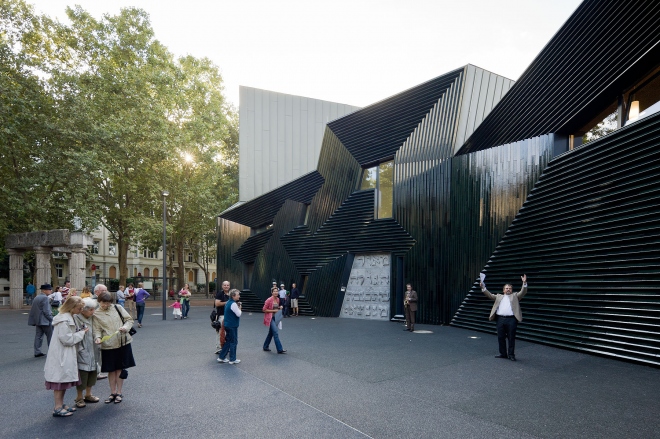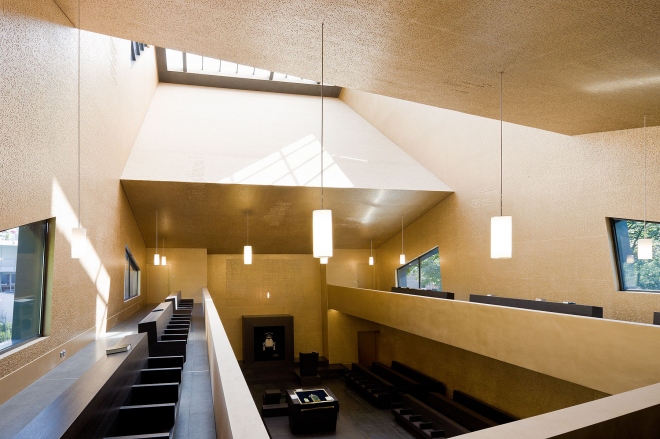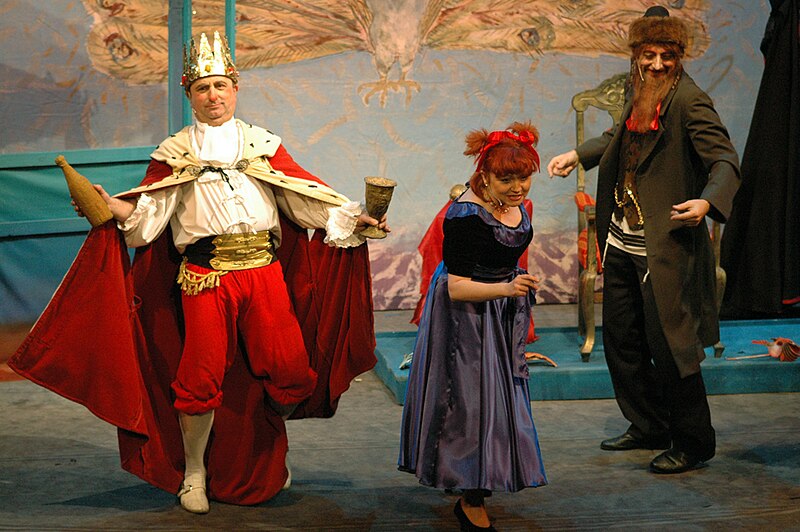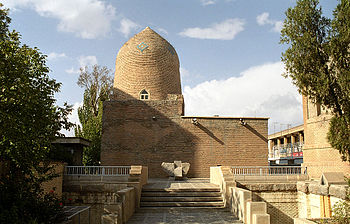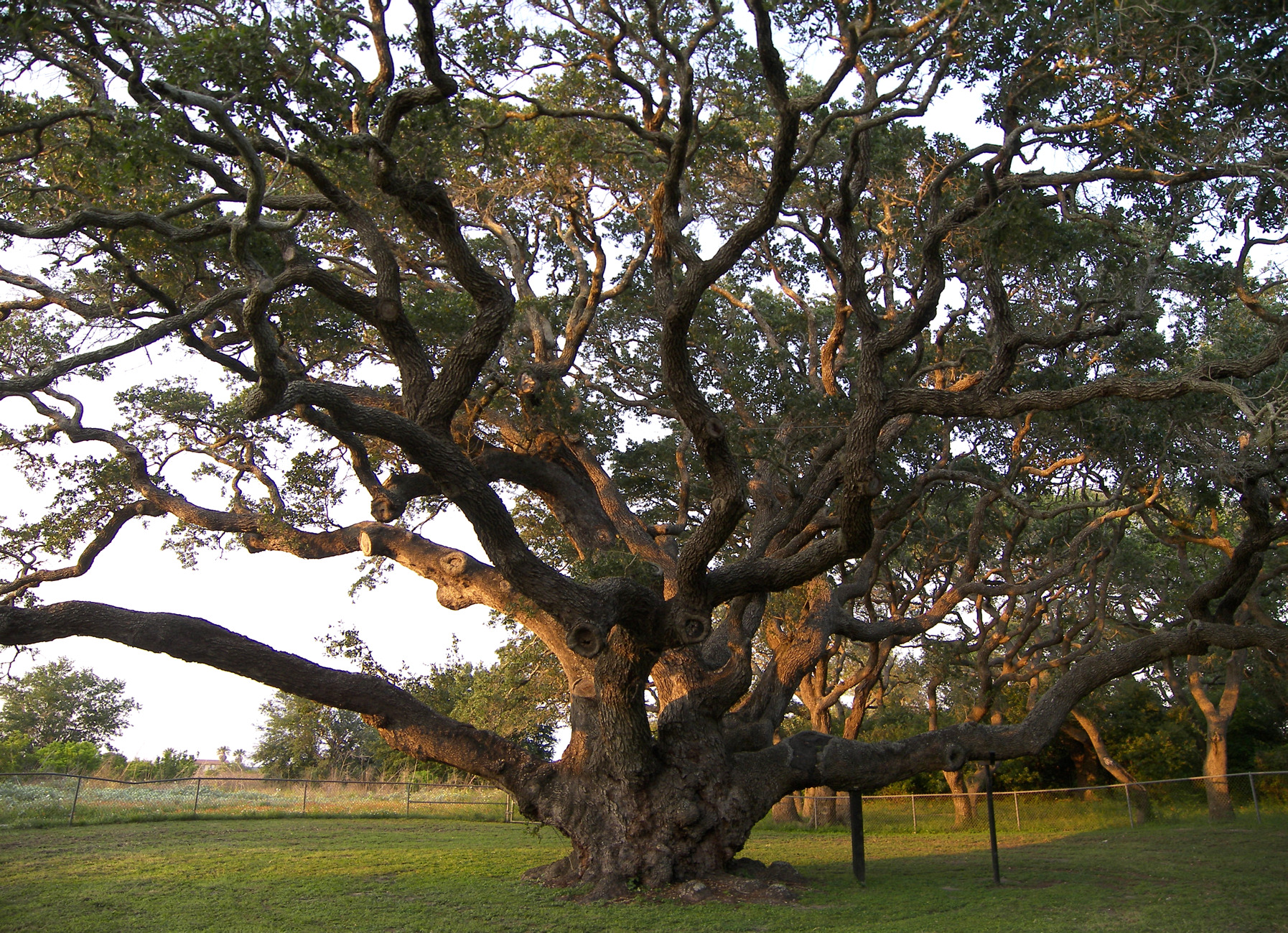As reported by Core77 blog, the Design Museum Holon hosted a design week for an impressive line up of designers from around the world. Kind of a design summer camp, the program gave the designers a firsthand look into what it means to design for Israel today, a country where good design has often taken a backseat to more utilitarian needs. Read about the design week at Core 77 blog here.
You can read more about some of Israel's young designers and their designs at a follow up segment on the Core 77 blog here.
Monday, April 23, 2012
Thursday, March 29, 2012
Synagogue in Mainz by Manuel Herz
Nominated for the Mies van der Rohe Prize for European architecture in 2011, the Mainz Synagogue by Manuel Herz represents the bold rebuilding of the Jewish community in Mainz, Germany. A Jewish presence has existed in Mainz for at least a millennium and produced many religious scholars, but over that period the community has been periodically eradicated and refounded.
The new synagogue and community center is the latest communal revival and is built on the site of the former synagogue. Unlike many synagogues designed in the post Holocaust era that try not to draw too much attention to themselves, the Mainz Synagogue offers an urban square in front of the main entrance.
See the project described in greater detail on Manuel Herz Architects' web site here.
Monday, March 5, 2012
Harvard Purim 2012 Event Guide
Purim is Wednesday night March 7th through Thursday March
8th
The Fast of Esther starts Wednesday, March 7th at 4:45am and
ends at 6:10pm
Purim with Hillel
52 Mt. Auburn Street, Cambridge
Megillah Readings*
6pm Wednesday night, Thursday morning at 6am and 8am
Women's Megillah reading* at 7:30am
*Please bring a box of pasta to use as a grogger and to be
donated afterwards to Harvard homeless shelter
Purim Seudah -
JLIC/Student Conservative Minyan/Orthodox Student Minyan
Meal - Thursday 12:30-2:30 (all are welcome)
Purim-Run: A Purim Celebration with SCM
Join the SCM community for a river-run themed megillah
reading and raucous Purim celebration on Wednesday March 7th, at 7pm, Ticknor
Lounge. Come dressed as your favorite
house mascot.
Worship & Study Minyan Purim Celebration
Join W&S for Megillah Reading, a Hamentoshen Bake Off,
and original minyan-produced entertainment.
From 7:00pm - 9:00pm in Smith Hall.
Tremont Street Shul
8 Tremont Street, Cambridge
Egalitarian evening service with Megillah reading -
Wednesday 6:30pm
Traditional Evening service with Megillah Reading -
Wednesday 8:30pm
Minyan Tehila
(all events at Casa Do Benfica, 178 Elm Street, Cambridge)
(all events at Casa Do Benfica, 178 Elm Street, Cambridge)
Purim davening and Megillah - Wednesday 6:25pm
Party and Megillah with Cambridge Minyan - 8:15-9:15
Late Megillah Reading - 9-10pm
Harvard Chabad's ABSOLUT PURIM 2012
The Crimson Bash -
THE BEST PARTY OF THE YEAR!
Wednesday 3/7 at the Harvard Crimson
8:30 Megillah Reading / 9PM AWESOME PARTY!
Hot food buffet, unlimited Hora, and incredible spirit.
Bagels, Lox and Megillah Brunch
Thursday, 3/8
12PM - Harvard Law School - WWC B015
12:15PM - Harvard Business School - Aldrich 208
Brought to you by Harvard Chabad, JLSA and the JSA
A Royal Feast
Thursday, 3/8 at Chabad
Last Chance to hear the Megillah at 4:30PM
Full spread festive dinner with lots of Chabad spirit 5PM
RSVP info@chabadharvard.org
Chai Center
Purim Party
Chai Center
Purim Party
Club Rumor, 100 Warrenton St. Boston
Purim party for 20s/30s young adults
Megilla Reading
$15 pre-register, $20 at the door
Register here
Purim!
Purim is Judaism's most festive holiday. It commemorates the Jewish people's deliverance from a genocidal plot to destroy them hatched by the evil Haman in the ancient Persian Empire. Like some other Jewish holidays, Purim can be summarized as: "They tried to kill us, they failed, lets eat!"
Purim is celebrated in many ways. We read of the Megilla, a scroll that recounts the story of Purim. It is also traditional to the give gifts of food and drink to our friends and money to the poor. Purim is also celebrated by wearing masks and costumes, and copious amounts of drinking, eating, and partying. A traditional Purim snack is a Hamantashen, a triangular shaped pastry filled with jam.
Purim is Wednesday night March 7th through Thursday March
8th .
The Fast of Esther starts Wednesday, March 7th at 4:45am and
ends at 6:10pm
Check out some of the Purim festivities happening in and around campus here.
To learn more about Purim visit the following resources:
Also check out this video of tomb of Mordechai and Esther, the heroes of the Purim story, here. The site is located in present day Iran.
Wednesday, February 29, 2012
Where Do You Give? Competition Deadline
Deadline extended to March 9th!
Where Do You Give? challenges artists, designers and conceptual thinkers to create an updated vehicle for giving in the 21st century that inspires a national conversation among all of us who seek to engage more deeply with our communities—be they geographic, ethnic, national or other—about where we give, to whom and why.
Use art, design and technology to change the way Jews think
about giving tzedakah. Where Do You Give asks artists and innovative thinkers
to reimagine tzedakah for the 21st Century.
Enter the competition today for a chance to win $2500, travel with AJWS.
Go to www.wheredoyougive.org to submit a
design that sparks a national conversation about giving.
Where Do You Give? challenges artists, designers and conceptual thinkers to create an updated vehicle for giving in the 21st century that inspires a national conversation among all of us who seek to engage more deeply with our communities—be they geographic, ethnic, national or other—about where we give, to whom and why.
Reimagine the
tzedakah box—an ancient ritual object used to collect money for
charitable causes—and you could win $2500, be featured in a national
exhibit and have an opportunity to travel internationally to meet with
some of AJWS’s grassroots partners. Watch this
video or go to
www.WhereDoYouGive.org to learn more.
Monday, February 27, 2012
Wednesday, February 22, 2012
Gavriel Rosenfeld on Jewish Architecture
Gavriel D. Rosenfeld, associate professor of history at Fairfield University, has written a book entitled Building After Auschwitz: Jewish Architecture and the Memory of the Holocaust published by Yale University Press. A couple months ago, he sat down with the book's publishers for an interview on the meaning of the term 'Jewish Architecture' and the effect that the Holocaust had on Jewish design. Some excerpts:
Yale University Press: How do you define “Jewish architecture”?
Gavriel Rosenfeld: Jewish architecture does not exist in any stylistically recognizable sense. Historically, the divergent experiences of Jews living in the diaspora prevented the emergence of a unified “Jewish style” of building. Still, the buildings built by, and for, Jews over the centuries have exhibited Jewish traits in the myriad ways that they have reflected the historical forces that have shaped Jewish life. Some of these forces have impacted the buildings used by Jews in indirect fashion. In other instances, Jews have made deliberate efforts to draw on their cultural and religious traditions to infuse their buildings with a sense of Jewishness. I prefer to think of Jewish architecture expansively, as buildings that express the Jewish historical experience.
YUP: How did the Holocaust affect Jewish artistic production, and architecture in particular?
GR: Jews in all fields of creative endeavor have been shaped by the legacy of the Nazi genocide, although not in the same way and certainly not at the same time. While writers, poets, and painters, for example, began to wrestle with the Holocaust’s significance in the early years after 1945, architects by and large refrained from doing so until the 1980s. Thereafter, the Holocaust’s legacy made itself felt in a variety of ways: in the deconstructivist movement, Holocaust museums, and even synagogue design. Overall, Jewish architects, like other creative figures, have struggled with the problem of how to represent the Holocaust in their work. The architectural responses to this aesthetic and ethical challenge have been diverse and they are notable for breaking new ground both in the history of Jewish architecture and western architecture more broadly.
YUP: What are the greatest challenges that Jewish architects have faced in the past, and how are they dealing with these issues today?
GR: For centuries, Jews faced major obstacles in breaking into the field of architecture due to guild restrictions and other professional barriers. This gradually changed with the onset of emancipation in the 19th and 20th centuries. Today, Jews face few such hurdles. Yet until recently, they were generally dissuaded from, and were inhibited about, expressing a sense of Jewishness in their work. Since the 1960s, however, the rise of multiculturalism and postmodernism in the west has liberated Jews to draw on Jewish sources of inspiration in their designs. This new sense of creative freedom has allowed some Jewish architects to attain unprecedented accomplishments and, at the same time, has made the architecture of Jewish architects more “Jewish.”Read the entire interview on the publisher's website:
http://yalepress.wordpress.com/2011/11/22/gavriel-rosenfeld-on-jewish-architecture/
Monday, February 20, 2012
Moshe Safdie GSD Lecture "On Invention and Fitness" Tuesday Feb 21st

Moshe Sadfie was born in Haifa, Israel and moved to Canada with his
family as a teenager. He attended McGill University and apprenticed with
Louis Kahn (another renown architect with a Jewish background). Safdie catapulted to
fame with his Habitat '67 project, an adaptation of his McGill master's
thesis built for the exposition in Montreal.
During his
illustrious career, Safdie has worked on many projects that are
connected with Jewish culture and history, including the Holocaust
History Museum at Yad Vashem and extensive work renovating the Old City
of Jerusalem. He writes about many of his experiences working on
projects in Jerusalem in his book Jerusalem: The Future of the Past.
Safdie's connections to the GSD also run deep; he served as the Director of the Urban Design Program and subsequently was the
Ian Woodner Professor of Architecture and Urban Design. He also taught a Jerusalem-based studio one semester at the GSD.
Safdie
has seemingly been everywhere in the architectural news a lot recently,
having recently completed the U.S. Institute of Peace in Washington
D.C., the Kauffman Center for the Performing Arts in Kansas City,
Missouri, and the Crystal Bridges Museum of American Art in Bentonville,
Arkansas.
The information of his upcoming talk has been reposted below from the GSD website:
Moshe Safdie, "On Invention and Fitness"
When
Tuesday, February 2106:30pm - 08:00pm
add to calendar
Where
Piper Auditorium, Gund Hall, 48 Quincy Street, Cambridge, MAEvent Description
Moshe Safdie is an architect, urban planner, educator, theorist, and author who embraces acomprehensive and humane design philosophy. Safdie is committed to architecture thatsupports and enhances a project’s program; that is informed by the geographic, social, andcultural elements that define a place; and that responds to human needs and aspirations. Major projects by Moshe Safdie currently under construction or recently completed includeMamilla Alrov Center, a 40-acre development that runs contiguous with the Old City inJerusalem; Marina Bay Sands, a mixed-use integrated resort in Singapore; Khalsa HeritageMemorial Complex, the national museum of the Sikh people in India; the United States Instituteof Peace Headquarters in Washington, D.C.; the Kauffman Center for the Performing Arts inKansas City, Missouri; Crystal Bridges Museum of American Art in Bentonville, Arkansas; andGolden Dream Bay, a residential and retail complex in Qinhuangdao, China.
Safdie has designed and realized a wide range of projects around the world, including cultural,civic, and educational institutions; mixed-use urban centers and airports; and master plans forexisting neighborhoods and entirely new cities. Many of his buildings have become belovedregional and national landmarks, including Habitat ’67, Montreal, Canada; Exploration PlaceScience Center, Wichita, Kansas; Salt Lake City Public Library, Salt Lake City, Utah; PeabodyEssex Museum, Salem, Massachusetts; Skirball Cultural Center, Los Angeles, California; theNational Gallery of Canada; and Yad Vashem Holocaust Museum, Jerusalem, Israel.In 1978, after teaching at Yale, Safdie relocated his residence and principle office to Boston, where he also served as the Director of the Urban Design Program at the Harvard UniversityGraduate School of design, and subsequently was the Ian Woodner Professor of Architecture and Urban Design. In addition to numerous articles on the theory and practice of architecture, Safdie has written several books, most notably: Beyond Habitat (1970), For Everyone a Garden (1974),Form and Purpose (1982), Jerusalem: The Future of the Past (1989), and The City After theAutomobile (1997). Moshe Safdie II, a second monograph of his work, was published in 2009.Based in Boston with offices in Toronto, Jerusalem and Singapore, Safdie has been the recipientof numerous awards, honorary degrees, and civil honors, including the Companion of the Orderof Canada and the Gold Medal of the Royal Architectural Institute of Canada.
Firm website.
Photo: Crystal Bridges Museum of American Art
Bentonville, Arkansas, US. © Timothy Hursley
Friday, February 3, 2012
Tu B'Shvat and Ecological Activism
The Jewish holiday of Tu B'Shevat falls out this year on Wednesday, February 8th. On the Jewish calendar, it always falls on the 15th day of the month of Shevat (from which the holiday derives its name).
Tu B'Shevat is a minor festival that is considered something of a Jewish version of Arbor Day. Having its roots in ancient Temple practices, Tu B'Shevat allows Jews to celebrate nature and explore the environmental aspects of their tradition. One of the often quoted texts that demonstrates Judaism's advocacy of responsible stewardship of the environment is an ancient rabbinic teaching that states:
"When God led Adam around the Garden of Eden, God said, 'Look at My works. See how beautiful they are, how excellent! For your sake I created them all. See to it that you do not spoil or destroy My world--for if you do, there will be no one to repair it after you'" (Ecclesiastes Rabbah 7.13).
The traditions of Tu B'Shevat include planting trees. Tu B'Shevat is considered the "New Year for Trees" by the Jewish tradition because it is the season in which the trees in Israel start to emerge from their winter sleep and begin a new fruit bearing cycle.
Another Tu B'Shevat tradition is having a Feast of Fruits, a formal meal similar to a Passover seder. This Tu B'Shevat seder was created by 16th century kabbalists of the city of Safed. Passages from the Hebrew Bible and Rabbinic literature would be read while five fruits and two grains associated with the land of Israel would be eaten. Four cups of wine would also be drunk, a mixture of red and white wines to represent the four different seasons.
With the increased concern for the environment and the planet's ecology within each of our design disciplines, Tu B'Shevat can take on additional meaning. We can remember that environmental protection has always been an element in Jewish tradition. Tu B'Shevat can serve as a reminder to us to make sure that our building, urban, and landscape designs do the utmost to protect the natural world that we live in.
Monday, January 23, 2012
Preston Scott Cohen Lecture to Open GSD Exhibit on Tel Aviv Museum of Art
The exhibition, entitled “Lightfall: The Tel Aviv Museum of
Art” focuses on Preston Scott Cohen’s design for the Herta & Paul Amir
Building at the Tel Aviv Museum of Art. The exhibition fills the main
exhibition space in Gund Hall and will be inaugurated on Jan. 24th and run
through March 4, 2012.
Please find more information about the exhibition here:
Preceding the opening, at 6:30pm, Preston Scott Cohen will
give a lecture, entitled “Museum as Genealogy,” followed by a discussion with
former New York Times architecture critic Nicolai Ouroussoff. The lecture will be given in Piper Auditorium at Gund Hall.
Please find more information about the lecture here:
The event is free and open to the public.
Labels:
Event,
Jewish Architects,
Jewish Architecture
Subscribe to:
Posts (Atom)



